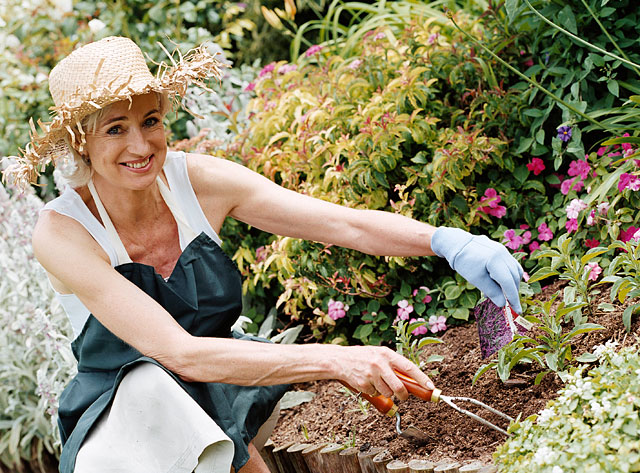As we approach the spring clean-up season, I’ll be bracing myself for a rush on people coming to our physical therapy clinic with elbow pain. Whether its scrubbing floors, applying a fresh coat of paint, or getting your garden ready for the season, many spring tasks are especially hard on the elbow, forearm, and wrist. The good news is that with a little prevention, you should be able to sail into summer free from elbow pain.
There are two main conditions that cause pain in the elbow. Tennis Elbow (lateral epicondylitis) is a condition in which pain is localized to the outside part of the elbow and often down the forearm. It is usually aggravated by activities which require a lot of heavy gripping, require lifting with the palm down, or require forceful twisting. Golfer’s Elbow (medial epicondylitis) is pain localized to the inside of the elbow which is aggravated by twisting of the forearm, lifting, gripping, and pulling.
These two conditions are classified as repetitive strain injuries (RSI’s). When a body tissue is exposed to abnormal stress over many repetitions, tissue breakdown occurs quicker than tissue repair. This leads to microdamage of the tendon and a chronic inflammatory process.
Unfortunately, both of these conditions become more resistant to treatment the longer symptoms are present. For this reason, prevention and early identification are crucial to preventing an ongoing problem.
- Warm-up– Before you tackle that raking, take a few minutes to get your heart rate up a bit. Simply taking a 5-minute walk at a moderate pace can do the job. It is also a good idea to perform an active warm-up for your arms, back, and neck.
- Choose the right tool– There are more ergonomic-friendly yard and garden tools available every year. Generally, tools with a slightly larger grip and some padding reduce stress on the wrists, elbows, and hands.
- Chunk it– Break up large tasks into smaller ones. Instead of spending 2-3 hours raking then 3-4 hours in the garden, it would be better to alternate between the two ever hour or so. You should also be sitting down for a 20-30 minute break every 2-3 hours or so to give your joints and muscles a change to rest for short periods throughout the day.
- Get it checked early-If you’ve been having elbow pain for more than 10 days, it is recommended that you make a trip to your doctor or physical therapist. Again, elbow tendonitis can be stubborn to treat if it has been present longer than a month or two, so don’t wait too long.
Fortunately, diagnostic tests such as an x-ray or MRI are usually not necessary, especially in acute cases. In most patients, a couple weeks of avoiding aggravating activities, along with the proper stretches and exercises, will allow the body to heal itself and the symptoms will vanish. There’s nothing worse than going into the summer dealing with an injury, so practice an ounce of prevention with your spring cleaning this year.








